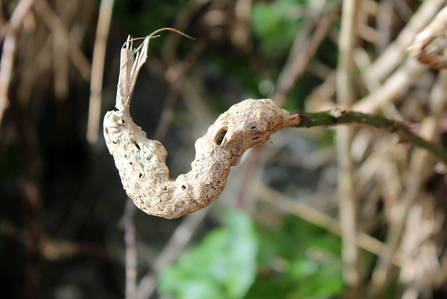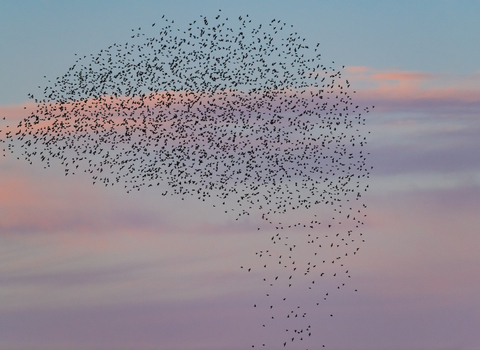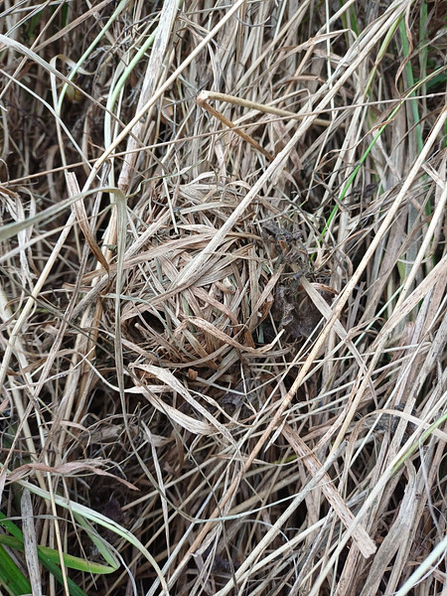As the days get shorter, the temperature drops, and so do the leaves. The skeletons of trees stand stark against the pale sky. Lacking their foliage with nests long since abandoned, the birds are easier to spot. Watch out for the incredible murmuration displays. If you're heading to the coast, the rockpools are still thriving with life: look out for miniscule stalked jellyfish, and sea hares amongst brightly coloured sea anemones.

Bramble stem gall-wasp by Sally Luker
Bramble stem gall-wasp
When the foliage has died back during the winter, it's a great time to be looking out for these small galls. The gall is an elongated swelling with a bumpy surface and each bump contains a separate gall chamber. It's possible to have up to 200 chambers, each containing a tiny wasp larva. You may also notice tiny holes where the adult has emerged.

Starling murmuration - Alastair Scarlett Photography
Starling murmuration
A beautiful bird, often overlooked, whose breeding plumage is iridescent purple and green and spotted with white in the winter. They have a range of vocalisations and are fantastic mimics. In winter, when our numbers are increased by starlings migrating to the UK for its relative warmth, you can witness the incredible spectacle known as murmuration - large numbers (often thousands) of starlings coming together, creating moving, fluid shapes in the sky at dusk before going to communal roost. Roughtor on Bodmin moor is a great place to witness a murmuration.

Harvest mouse nest by Steve Adams
Harvest mouse nest
Harvest mice build a tightly woven nest, ranging in size from golf ball to tennis ball, often from grass that is split but still attached to a living plant. It is interwoven into the surrounding vegetation and often has no obvious entrance or exit hole. The female will build it in one night and give bird to around six young in the nest.
Cornwall Mammal Group volunteers carry out yearly harvest mice nest searches over winter, so get involved!
Velvet Shank ©Ben Cook
Velvet shank
Flammulina - from the velvet shank's latin name flammulina velutipes - means 'little flames' and the orange cap of the gilled mushroom, 2-10cm wide, certainly brightens the dark winter days. Velutipes means 'with velvet legs', which is how the stipe (the stem of a mushroom) looks and feels. Found on broadleaved trees, particularly elm, they are able to withstand being completely frozen and are a valuable food source for some winter invertebrates such as springtails and flies.

